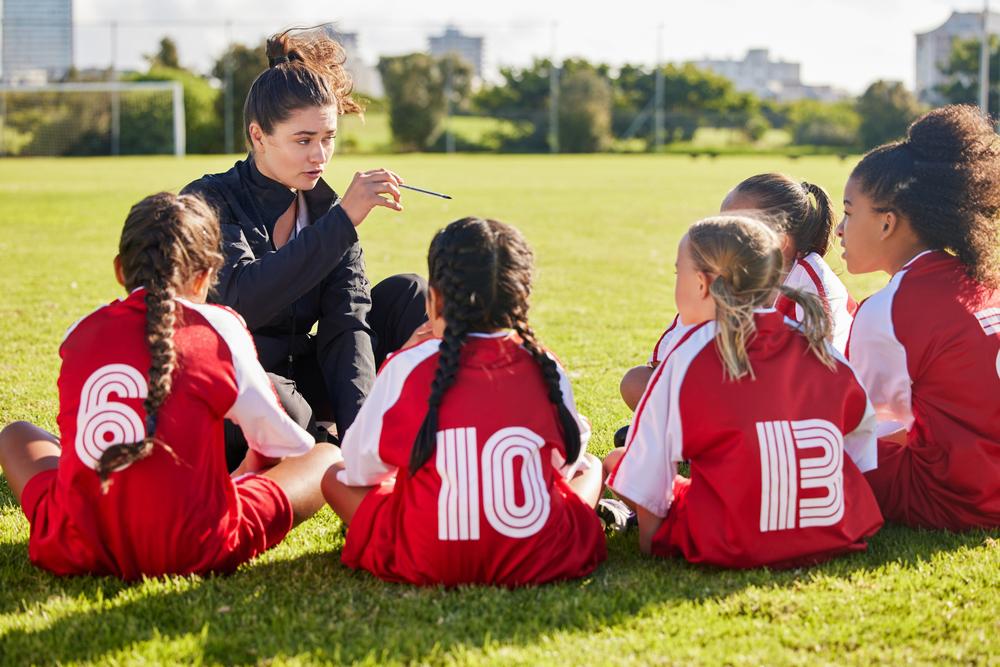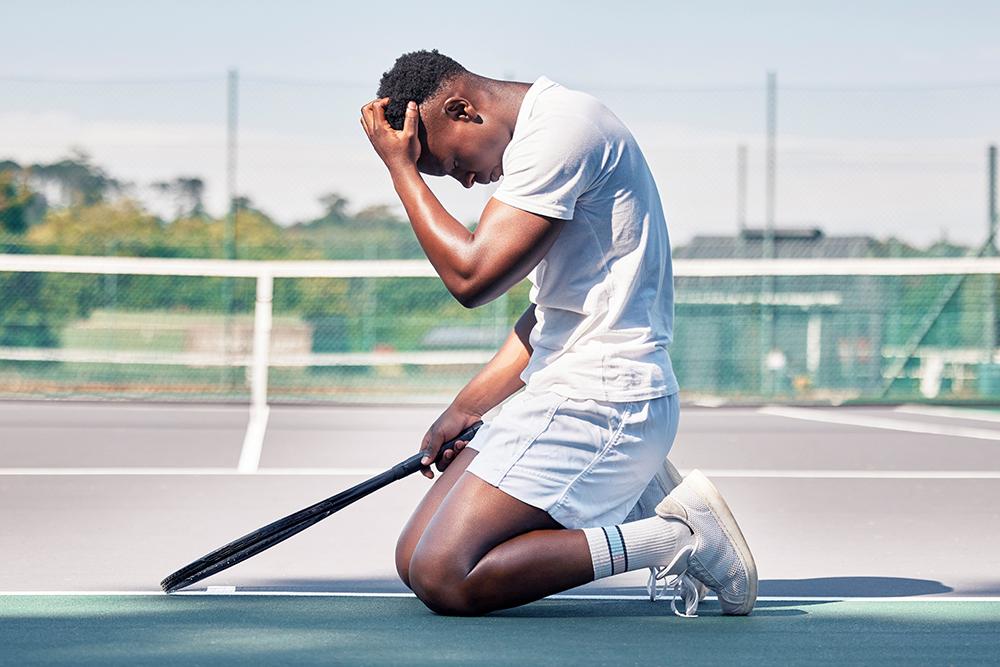 Change is inevitable, but for a young athlete, even a positive change can bring up feelings of stress and anxiety. For caregivers, it can be tempting to try to step in and solve every perceived problem or issue your athlete has, but if an athlete is going to grow and develop in their sport and life, you need to allow them the space to process change and figure out how to move through challenges. However, there are ways that you can gently help them in the process.
Change is inevitable, but for a young athlete, even a positive change can bring up feelings of stress and anxiety. For caregivers, it can be tempting to try to step in and solve every perceived problem or issue your athlete has, but if an athlete is going to grow and develop in their sport and life, you need to allow them the space to process change and figure out how to move through challenges. However, there are ways that you can gently help them in the process.
Here, board-certified family physician and TrueSport Expert, Deborah Gilboa, MD, shares what happens to a brain when confronted with change, how this applies to your athlete, and the best ways a caregiver can help an athlete recover from any changes and come back stronger and more resilient than ever.
1. Change is inevitable—and scary
First and foremost, any kind of change is going to come with some anxieties or stressors. That’s true of negative change, like getting cut from a team, but it’s also true for positive change, like being selected as a team leader. Often, Gilboa says, caregivers fail to see how changes impact their young athletes, or they see the change but downplay the importance. Something that seems catastrophic to your athlete, like a friend moving away, doesn’t seem like such a big deal to you, since you know that friendships at that age are often temporary. But for your athlete, that change can feel life changing.
The same is true for positive change. You may applaud or celebrate a new leadership position, but along with excitement and pride, your athlete may feel a lot of stress and anxiety because of that change. They may be worried they won’t be able to live up to the coach’s expectations, or perhaps they’re nervous about what their teammates will think of them in the role.
2. The brain on change
This reaction to change isn’t just a psychological phenomenon. Rather, the brain is physically pushing back against any change! “Our brain works to keep everything in a very tight range,” says Gilboa. “It doesn’t like change. For example, no matter what the temperature is outside, your body does everything it has to do to keep your internal temperature right at 98.6 degrees. That dedication to homeostasis applies not only to our body’s temperature but to our overall status. Our brains consider every single change or possibility of a change as a threat.”
This is because the brain’s number one job is to keep us alive, Gilboa explains. “The easiest way to keep us alive is to stick to the status quo,” she says. “You’re alive right now, but if something changes, the brain isn’t sure what will happen. When we encounter a change or the possibility of a change—even something as simple as a disruption in our usual practice schedule or a pop quiz in class—the brain reacts.”
As we get older, our brains become better and more practiced at navigating change. But for young athletes, especially those who haven’t experienced many disruptions in their life, even the smallest change can feel huge.
3. You can’t handle stress for your athlete
In these situations, it’s tempting to try to help alleviate your athlete’s stress, or to be frustrated by their feelings. If the stress is related to a change you’ve made (even if it’s positive), you may also be feeling defensive, guilty, or upset that your athlete isn’t responding the way you feel that they should.
“A lot of parents feel guilty when their athlete is stressed,” says Gilboa. “They believe that if their kid is stressed, they must be doing something wrong. However, because all change is stressful, that is incorrect. Our job is to help them navigate the stress that comes to them, and to help them curate that stress by guiding them be selective about what matters most to them.”
4. Redirect away from stress
The simplest trick to helping your athlete instantly calm down in a moment of stress is to ask them a ‘thinking question.’ For instance, Gilboa explains that asking a question like ‘What are some of the choices or decisions you have here?’ will cause your athlete’s prefrontal cortex to engage. “This is instantly calming, because the amygdala—the part of the brain that creates the stress reaction—can’t also be fully activated when the prefrontal cortex is engaged,” she explains. “It’s like to trying to inhale and exhale at the same time.”
Your athlete won’t always solve their problem with the question that you ask, but it will help their brain shift from that freaked out mode into a more thoughtful mindset. The question you ask doesn’t even need to directly relate to the issue or change causing the stress. “You can ask if they would like to talk about their issue now or talk about it after school. You can ask if your athlete wants to take a walk or get a glass of water. Any question that requires them to think will help shift their brain and decrease those stress chemicals.”
5. Recognize that movement can be medicine
 Many young athletes naturally use their sport as a form of coping with stress and change, so a change like an injury or the need to take a step back from their sport can be traumatic for a young athlete. “A lot of kids are drawn to athletics because when they practice their sport, everything else falls away,” says Gilboa. “I hear young athletes constantly say things like, ‘No matter what is happening in the rest of my life, when I play basketball for that hour, I don’t think about anything else.'”
Many young athletes naturally use their sport as a form of coping with stress and change, so a change like an injury or the need to take a step back from their sport can be traumatic for a young athlete. “A lot of kids are drawn to athletics because when they practice their sport, everything else falls away,” says Gilboa. “I hear young athletes constantly say things like, ‘No matter what is happening in the rest of my life, when I play basketball for that hour, I don’t think about anything else.'”
Using sport to manage emotions is healthy—to a point. It’s one of the most positive coping strategies for dealing with stress and change, while building resilience, says Gilboa. But it can’t be the only tool in your athlete’s toolbox, because there will be a point where they can’t play their sport for a period of time due to various reasons.
6. Resilience is the antidote to change—and is powered by recovery
Resilience is Gilboa’s favorite word and character trait. Simply put, resilience is the ability to recover and bounce back from change, especially negative change. “When caregivers can help their athletes become more resilient, the ability to navigate change becomes easier,” she says.
And recovery leads to resilience. “Recovery from change helps resilience get stronger,” Gilboa says. “The same way our bodies get better from properly recovering after a good workout, our brains can get better by properly recovering after a stressful situation.”
Sleep is a critical component of recovery, and Gilboa is quick to tell caregivers to allow their athletes to sleep in on weekends, go to bed early, or sneak in a nap whenever possible. “While sleeping in on weekends may not be good for adults, it’s actually beneficial for developing children and teenagers,” she says.
7. Keep structures and routines as much as possible
Even if your athlete is starting a new sport or changing teams, as a caregiver, the best thing you can do is preserve some routines and structures for them. “Even if the situation is totally out of your control and your athlete can’t stick to their normal school and practice routines, what structures can you keep in place?” Gilboa asks. “If your athlete made a new team and now your whole family schedule is thrown sideways, maybe family dinners aren’t going to be possible. But what about having family breakfast instead? Find what works for your family so you can get back into those routines that remind their brain of the things they still have control over.”
8. Expect pushback from your athlete when it comes to change
“Finally, it’s good to remember that when teens push back about change, it’s not because they hate you,” Gilboa says. “It’s not because they don’t trust you. It’s not because they’re inherently difficult. It’s because their brain is trying to keep them safe. And when a caregiver announces a change, the athlete is even more on alert because they rely on their caregiver to keep them safe.”
It may be difficult to not become angry or frustrated when a child is pushing back against a change. But Gilboa says, “While you should have rules about behaviors, you cannot have rules about feelings. Telling your child that they have to feel a certain way is famously unsuccessful and puts up barriers between you in terms of your communication.”
_____________________________
Takeaway
As a caregiver, it’s important to recognize how change can impact your athlete. Even a positive change can cause stress and anxiety for a young athlete, and as a caregiver, your job is to recognize that change is inevitable and help them navigate it without trying to control the situation for them. Prioritize your athlete’s mental rest and recovery in the same way you help them prioritize physical rest and recovery.



